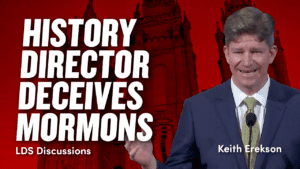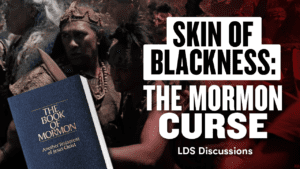In this episode, we explore the fascinating and lesser-known history of Joseph Smith’s treasure digging, a critical aspect of his early life that raises important questions about the origins of Mormonism. While often overlooked, Joseph’s involvement in folk magic and treasure-seeking practices sheds light on his evolving role as a religious leader and how these activities may have influenced the creation of the Book of Mormon.
In the early 19th century, belief in buried treasures and folk magic was widespread in rural New York. Local farmers and villagers believed that ancient treasures were hidden in the earth and could be found through the help of seers who used magical tools like seer stones. Joseph Smith became known as one of these seers, claiming he could locate lost objects and buried treasures by peering into a stone placed inside a hat. He convinced others that his stone showed him the location of hidden riches, leading to several treasure-digging expeditions with local supporters.
Joseph’s treasure-hunting career is well-documented, with one of the most significant pieces of evidence being the 1826 court record from Bainbridge, New York. In this case, Joseph was charged as a “disorderly person” for his activities as a glass-looker—a term for someone who used a stone to seek hidden treasures. While defenders of Joseph downplay this event, the record highlights how deeply his reputation was tied to treasure digging and raises questions about how his seer abilities were viewed by those around him.
These treasure digs often ended in disappointment, with Joseph explaining that the treasure would “slip away” or disappear due to a curse or insufficient faith among the group. Despite the failures, Joseph’s persuasive charisma kept people invested in his abilities. Interestingly, this same seer stone played a central role in translating the Book of Mormon just a few years later, suggesting a continuity between his treasure-seeking and religious activities.
By the late 1820s, Joseph began shifting away from treasure digging and refocused his energies on religious claims. The transition was gradual but significant. The Book of Mormon project began around the same time his treasure expeditions faded, raising questions about how his previous experiences shaped his later religious work. Did the skills Joseph developed as a treasure seer—using a seer stone, telling elaborate stories, and explaining why hidden things couldn’t be seen—translate into his role as a prophet and scripture translator?
For many Latter-day Saints, the connection between treasure digging and early Mormonism can feel surprising, especially since the church traditionally minimized these details. However, understanding Joseph Smith’s treasure-seeking context offers valuable insights into how the early Mormon movement took shape. It paints a fuller picture of his life and the environment that inspired his later religious claims.
Far from being a fringe story, Joseph Smith’s treasure-digging activities are a key part of Mormon history that deserve careful consideration.
LDS Discussions Essay: Treasure Digging
LDS Discussions Platforms:
- LDS Discussions Website
- LDS Discussions on Anchor
- LDS Discussions on Spotify
- LDS Discussions Playlist on YouTube
Contact LDS Discussions:
- Twitter: @ldsdicussions
- Facebook: @ldsdiscussion
- Insta: @ldsdiscussions
- Email: ldsdiscussions@gmail.com
Show Notes:
Mormon Stories Related Content
- 1054-1055: Joseph Smith’s Treasure Digging – Dan Vogel
- 1074: Joseph Smith’s Involvement in Folk Magic and Treasure Digging
- 1344: Captain Kidd, Treasure Digging, Joseph Smith, and the Book of Mormon
- 1443-1447: Recovering Agency – Examining Mormon Mind Control w/ Luna Lindsey Corbden
- Mormon Stories Essays
Other




9 Responses
This was SO incredibly informative. Please keep it going!!! I’ve seen LDS discussions on IG and it’s hard for me to get through it all but this format is far more conducive to learning for me, at least. Thank you Matt for your hardwood and please do many many more episodes!
I’ve learned about the treasure digging before. But Mike made WHY the connection is important so clear. Reward when you die. Just keep them believing you have power/authority. Never have to produce.
I didn’t learn about JS’s seerstone until on my mission in 1980 listening to a Truman Madsen talk. I had grown up on a diet of pictures of JS looking at the plates, never seeing a single picture of his face in his hat. I also read about accusations of JS using the stone and scrying method for treasure seeking, but the people I trusted most aggressively denied these allegations as true, calling them “viscous lies.”
It would be decades later before learning that JS obtained his seerstone while digging a well. It’s in this context that the claim of Interpreters make no sense.
For me the Church’s 2015 admission that these “vicious lies” of treasure seeking were actually true was earth shattering for me. What new discovering had the Church made to bring this admission to the forefront? None, in fact that had JS’s rock the whole time. The Church simply realized that lying about JS’s scrying for treasure was futile. That seeking hide the fact that scrying method to read BoM words on a rock was futile. The information age had made the Church’s disinformation ineffective.
I bring my story up to emphasize the importance of shows like this, and it’s why I’m a monthly donor to Mormon Stories.
You guys, the infertility friend story at the end of this episode really got me in the feels. I went through the same thing after my infertility diagnosis. Why would god not want me to have kids? If our purpose on earth is to bring children into the faith, why would god make me this way or let this happen? It’s so unfair! How is it that some rando crack addict can have several children but somehow I’m not good enough?!?! It was and is a very very hard journey and this whole mindset comes from, of all things, treasure digging?? Fertility is a slippery treasure, boys, and Jo Smo ruined my family. Thank you for everything you do.
Absolutely loved this episode! I really appreciated how he approached the topic. I had several “ah-hah” moments even though this is a topic I have studied. Please bring Mike back for more conversations!
You asked and I’m answering. This episode was fantastic. I appreciate all the work LDS Discussions has put into his research and the prospect of literally starting from the slippery treasure-digging ground up is perfect. Can’t wait for the rest and to have this indispensable library when it is complete. Thank you John, Renaldo, Jen and company for all you do to keep us informed and afloat. So much love.
Regarding blame reversal, my great-great grandfather, a faithful Mormon, wrote in his journal that he gave a blessing to a sick daughter, but he didn’t “have enough faith” to heal her and she died. When someone gets better, it’s due to the power of the priesthood, but when they are not it’s the fault of the individual giving the blessing. So sad and harmful.
Fascinating information! I’ve already watched the next two episodes and it was so interesting that I needed to find the very first episode. This is going to be a great series! Thanks Mike, and thanks John for all your fine work on Mormon Stories.
I have been inactive for 40 years yet just found Mormon Stories about 2 weeks ago at 71. It has been so profoundly helpful in uncovering the hurt, sadness, joy, and understanding of what I did not know, that I did not know. I listened for over 100 hours then decided to go back to the beginning to have a firm foundation to stand on. It is helpful to hundreds of different ways people and chosen to walk away and the joy or pain of it all. What a difference you are making in the face of ex-communication, feeling weary, death threats, and your own personal satisfaction in pursuing a vision. I am honored to step on this path and contribute as much as I can, to tell others, and to raise awareness in a loving way. SHOCK: Sacrament prayer is part of a “magical” beginning. Drop the Mic!!!!!!